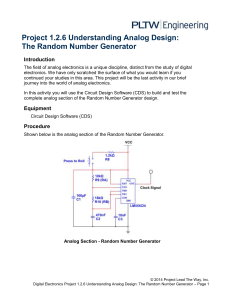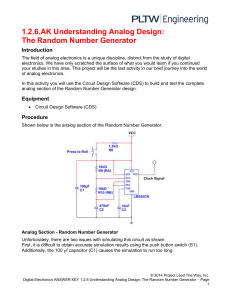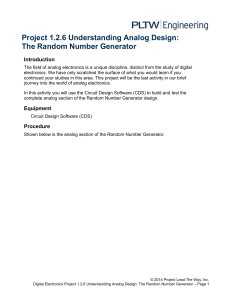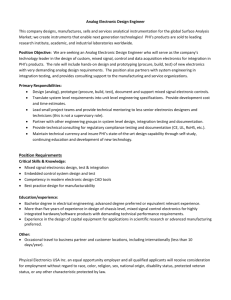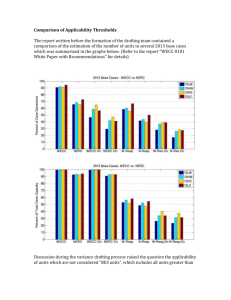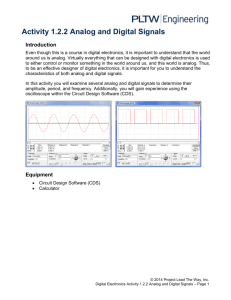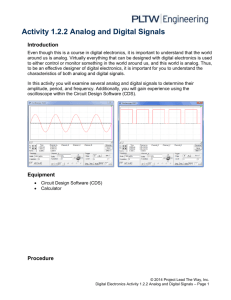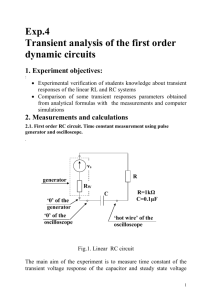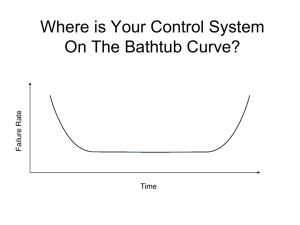File
advertisement
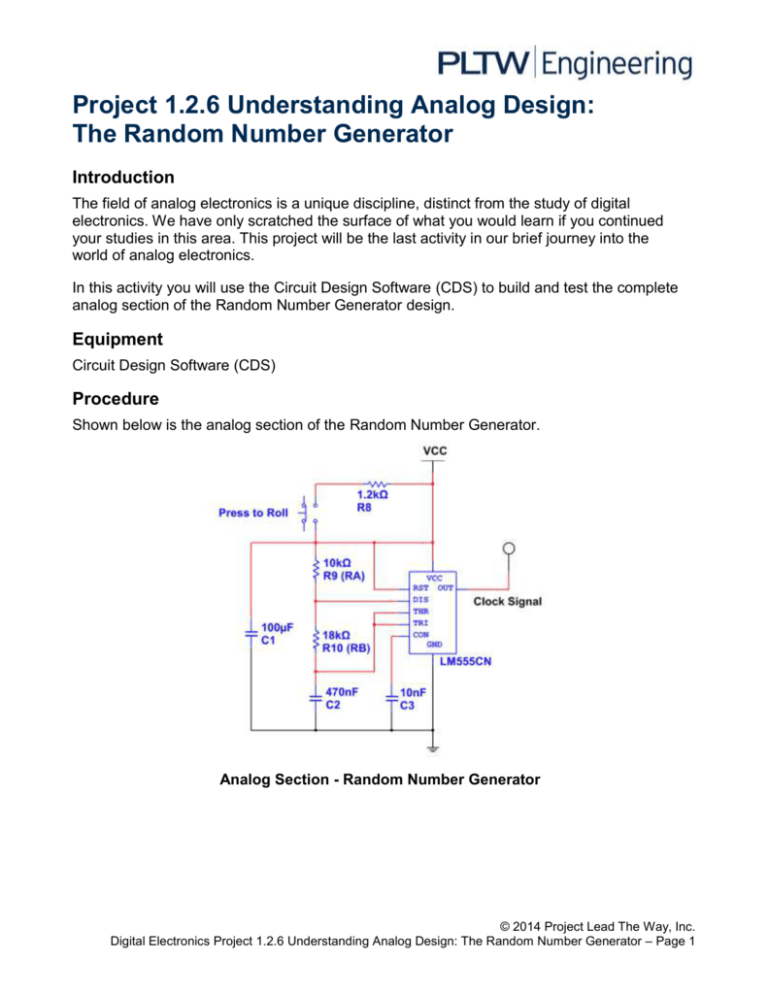
Project 1.2.6 Understanding Analog Design: The Random Number Generator Introduction The field of analog electronics is a unique discipline, distinct from the study of digital electronics. We have only scratched the surface of what you would learn if you continued your studies in this area. This project will be the last activity in our brief journey into the world of analog electronics. In this activity you will use the Circuit Design Software (CDS) to build and test the complete analog section of the Random Number Generator design. Equipment Circuit Design Software (CDS) Procedure Shown below is the analog section of the Random Number Generator. Analog Section - Random Number Generator © 2014 Project Lead The Way, Inc. Digital Electronics Project 1.2.6 Understanding Analog Design: The Random Number Generator – Page 1 Unfortunately, there are two issues with simulating this circuit as shown. First, it is difficult to obtain accurate simulation results using the push button switch (S1). Additionally, the 100 f capacitor (C1) causes the simulation to run too long. To fix these issues, we must make two simple changes to the circuit. First, replace the push button switch with an SPST switch. Second, change the 100 f capacitor to 50 f. These changes are shown below. Also shown are the oscilloscope connections (highlighted). Modified Analog Section – Random Number Generator 1. Using the Circuit Design Software (CDS), enter the modified analog section of the Random Number Generator shown. 2. With the switch closed, start the simulation. 3. Open the oscilloscope tool and adjust the scale of the time base and channels so that the three signals are easy to see and measure (see below). © 2014 Project Lead The Way, Inc. Digital Electronics Project 1.2.6 Understanding Analog Design: The Random Number Generator – Page 2 4. Restart the simulation. 5. After the first few square waves are observed on the output signal, open the switch. Let the simulation run until the output signal stops oscillating. When the oscillation stops, stop the simulation. This may take a few minutes. 6. Adjust the oscilloscope to display the third or fourth square wave of the output signal. Using the oscilloscope’s markers, measure the period of this signal. Use this data to calculate the frequency. Record your result in the table. Signal Period Frequency First Square Wave 15ms 66Hz Middle Square Wave 25ms 40Hz Last Square Wave 66ms 15Hz 7. Repeat step (6) for a signal in the middle of the simulation, approximately half way between the first and last square wave observed. 8. Repeat step (6) for the last square wave observed prior to the oscillation stop point. Conclusion 1. When you press the push button of the Random Number Generator, the 555 Timer oscillates at approximately 65 Hz. If you want the oscillation to start at 100Hz, what value would you apply to C2? 50uF © 2014 Project Lead The Way, Inc. Digital Electronics Project 1.2.6 Understanding Analog Design: The Random Number Generator – Page 3 2. The values of R9 & C1 determine the time from when the push button is released to when the oscillation stops. If you wanted to lengthen this time period, what changes would you make to one or both of these components? Explain. C1 would have to be a greater value R9 could stay the same © 2014 Project Lead The Way, Inc. Digital Electronics Project 1.2.6 Understanding Analog Design: The Random Number Generator – Page 4
